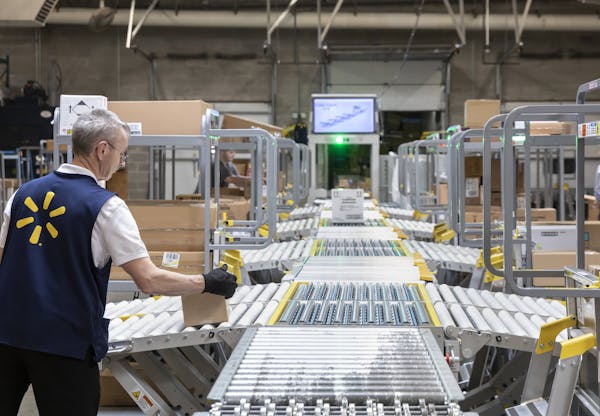Minnesota factory officials — especially those in rural areas — say severe worker shortages are increasingly impeding their growth and profits.
Nearly 50% of factory managers surveyed in March by Enterprise Minnesota said their inability to find qualified workers had hurt growth. That is a rise of 14 percentage points from 2017, according to the survey results released Tuesday.
In a sign of more trouble, 76% of manufacturing executives in rural parts of the state said "the worker shortage made things more difficult." Factory leaders in western Minnesota reported greater pessimism about the worker dilemma and economy than in other parts of the state, the report said.
Enterprise Minnesota CEO Bob Kill noted that manufacturing executives generally acknowledged feeling economic uncertainty but said that most felt confident about their firm's future. Still, "the biggest factor casting a shadow on that enthusiasm is the ongoing worker shortage which has no end in sight," Kill said.
He added that the producers that were most likely to succeed "will be the ones that have leveraged the appropriate combination of automation, productivity strategies, effective leadership, team development and strategic planning."
Kill said most of the companies surveyed were small to medium-size manufacturers with customers in the United States, followed by Canada and Mexico. While many companies didn't do large amounts of business with China, the recent trade wars and skyrocketing tariffs escalating between the United States and China are believed to have been a factor in the less optimistic outlook for the 2019 economy.
The survey found sharp reductions in the number of companies expecting an "economic expansion" and sharp increases in the number of firms expecting a flat economy or a recession.
Kill noted that rising trade tariffs were a concern some executives mentioned during several focus groups conducted in March, before the trade war between the U.S. and China escalated. However, at the time the topic wasn't front and center for most of the 500 producers surveyed.
"You can't escape the trade tariffs. The impact is indirect in some cases," Kill said Tuesday. "You will see there is a little bit of drop off in the economic [outlook for 2019]. I think that has some relationship to the trade tariffs."
Two weeks ago, the state reported that fourth-quarter job vacancies increased 20% to 137,000 open positions at the end of 2018, which translates to 4.9 openings for every 100 jobs, said Steve Grove, commissioner of the Minnesota Department of Employment and Economic Development (DEED). Manufacturers had an 8% job vacancy rate.
The results of the annual Enterprise Minnesota study will be shared in a series of regional meetings across the state, the first of which was Tuesday.
Manufacturing managers told the group their companies are trying to boost productivity to counteract the shortage by investing in more automated equipment and by improving factory processes.
"Of concern, however, is little investment by companies to provide leadership training for employees. Yet notably, respondents said that maximizing productivity is second only to finding new customers as an important driver of future growth," the report said.
Grove also noted that companies, with help from the state, need to invest in training and lower employment barriers.
More than 80% of surveyed companies with annual revenue of more than $5 million reported problems stemming from severe labor woes. Separately, many said they are concerned about the growing cost of providing health care for workers, an issue that has consistently risen for the last 11 years of Enterprise Minnesota's survey.
The statewide survey was conducted in March via phone surveys with 500 manufacturing executives by the pollster group Meeting Street Research. Separately, findings were also compiled via interviews that took place with the help of 13 separate focus groups led by Enterprise Minnesota.
The annual project was partly funded by Bremer Bank, Granite Equity Partners, Gray Plant Mooty, King Solutions and DEED.
Tuesday's findings generally agree with local and national findings recently reported by the state of Minnesota, Creighton University and the Institute for Supply Management.
Creighton's manufacturing employment index for the nine-state mid-America region dropped to a "tepid" 51.1 in April from March's "solid" 56.6, said Ernie Goss, director of Creighton's Economics Forecasting Group.
"The regional economy continues to expand at a positive pace," Goss said. "However, as in recent months, finding and hiring qualified workers remained the chief threat to manufacturing economy for the region. … Of surveyed factory managers, approximately 44.7% identified labor shortages as the greatest threat to company success in the next 12 months."
Dee DePass • 612-673-7725
